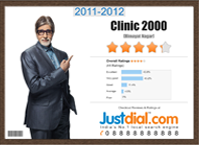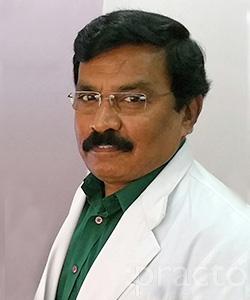Advanced Acne and Scar Treatment in Hyderabad at Clinic 2000
Acne/Pimples Scar Treatment
Pimples other wise known as Acne in Medical Terms is a skin condition that affects up to 80% of people in their teens and twenties, and up to 5% of older adults. While many people recover from acne without any permanent effects, some people are left with disfiguring Acne scars. There are some topical skin care products and medications that can improve mild Acne scarring, but most Acne scars used to be treated with a combination of surgical procedures and skin resurfacing. The latest, safest and a treatment with least down time is E Plus Laser Treatment for Pimple Scars.

Early Acne Scars
After the Pimples or an Acne lesion has healed, it can leave a red or hyper pigmented mark on the skin. This is actually not a scar, but rather a post-inflammatory change. The redness or hyper pigmentation is seen as the skin goes through its healing and remodeling process, which takes approximately 6-12 months. If no more acne or pimples develop in that area, the skin can heal normally. Any dark colour or Hyper Pigmentation change or skin defect still present after 1 year is considered to be a permanent defect or scar.
Preventing Early Acne Scars
The best way to prevent post-inflammatory changes caused by acne is to prevent acne lesions from occurring. This is done by understanding the factors that cause acne and using the appropriate acne scar treatment for the different acne types. Some more information about acne scar treatments is as follows.
Treating Early Acne Scars
The post-inflammatory changes caused by acne are part of the skin’s natural healing process. There are certain acne scar treatment practices that can help facilitate this healing process.
Unprotected exposure to the sun causes more skin damage and delays healing, therefore wearing a good sunscreen is important.Using retinoids speeds up the skin’s remodeling process and helps heal post-inflammatory changes. Appropriate formulations of Alpha-Hydroxy Acids (AHAs) and Beta-Hydroxy Acid (BHA) that contain the correct concentrations at the appropriate pH helps the skin’s remodeling process. Picking at scabs should be avoided at all costs. Scabs form to protect the healing process that is going on underneath them. Pulling a scab off before it is ready interferes with the healing and remodeling process, prolonging the time that post-inflammatory changes will be visible.
Antioxidants and Post-Inflammatory Changes
As we understand more about skin damage from free-radicals, it seems that using an antioxidant would help treat post-inflammatory changes or even permanent scars. Unfortunately no good scientific studies have shown that any oral or topical antioxidant prevents or heals skin damage. As a matter of fact, Vitamin E, when applied topically to healing wounds, has been shown to cause more harm than good. As antioxidant research continues, scientists may find a formulation that effectively reverses skin damage, but until then any claims of skin rejuvenation through the use of antioxidants are merely hype.
Acne scars are classified as ice pick, rolling, and box Scar based on the appearance of the scar. After taking into account previous retinoids use, facial scars are mapped out and a staged acne scar treatment plan is developed.
Acne Scars – Ice pick
Ice pick scars are narrow, sharp scars that make the skin appear it has been punctured with an ice pick. They are usually narrower than 2 mm and extend into the deep dermis or subcutaneous layer. Ice pick scars are usually too deep to correct with skin resurfacing acne scar treatment like dermabrasion. However treatments such as E Plus Laser are able to reach those depths and repair the skin damage to a great extent.
Acne Scars – Box Scar
Boxcar scars are round to oval depressions that have sharp vertical edges. Unlike ice pick scars they do not taper to a point at the base. Shallow boxcar scars are 0.1-0.5 mm in depth and can usually be treated with conventional skin resurfacing techniques. Deep boxcar scars are >0.5 mm in depth and require full-thickness treatment techniques such as E Plus Laser.
Acne Scars – Rolling
Rolling scars occur as a result of tethering of otherwise normal-appearing skin to the subcutaneous tissue below. This process gives the skin a rolling or undulating appearance. Conventional skin resurfacing techniques do not work on rolling scars. They must be corrected by breaking up the subcutaneous fibrous bands by E Plus Laser resurfacing.
Acne Scar Treatment
There are numerous procedures in acne scar treatment that can be used to correct acne scars. Each procedure has its own risks and benefits, and several procedures are normally combined to create the smoothest appearing skin. Here is a brief discussion of the more effective acne scar treatment procedures.
Dermal Fillers
There are many types of dermal fillers that can be injected into acne scars to raise the surface of the skin and give a smoother look. Examples of dermal fillers are fat, bovine collagen, human collagen, hyaluronic acid derivatives, and polytheyl-methacrylate microspheres with collagen. The injection of these materials does not permanently correct acne scars, so further injections are necessary making it more and more expensive for such a temporary treatment of Acne Scars.
Punch Excision
This method of surgically correcting acne scars is used on deep scars such as ice pick and deep boxcar scars. This procedure uses a punch biopsy tool which is basically a round, sharp “cookie-cutter” tool that comes in diameters ranging from 1.5 mm to 3.5 mm. The size of the tool is matched to the size of the scar to include the walls of the scar. Under local anesthesia the scar is excised with the punch tool and the skin edges are sutured together. The newly produced scar eventually fades and may not be noticeable. If it is noticeable, it is more amenable now to resurfacing techniques.
Punch Excision with Skin Graft Replacement
With this method the scar is excised with the punch tool as above. Instead of suturing the skin edges together, the defect is filled with a punch skin graft usually taken from behind the ear. With this procedure a color and texture difference may be noticeable, but a skin resurfacing technique can be used 4-6 weeks after the grafting to correct this difference.
Subcutaneous Incision
Subcutaneous incision, also known as Subcision, is used to break up the fibrous bands that cause rolling scars. Subcision is performed under local anesthesia by inserting a specially beveled needle under the skin so that it is parallel to the skin surface. Staying in the plane between the dermis and the subcutaneous tissue, the needle is gently advanced and retracted in a piston-like motion cutting the tethering bands. This procedure causes bruising which fades after about 1 week. The risks of subcision include bleeding and the formation of subcutaneous nodules. Bleeding can be controlled with proper use of anesthetics and bandaging, and the subcutaneous nodules can be treated with injection of corticosteroids into the nodule.However this age old procedure of Subcision has out lived it’s usefulness with the arrival of Lasers on the scene, more so after the arrival of E+ Laser treatment of Acne Scars..
Laser Treatment
Laser resurfacing is a popular acne scar treatment for many skin defects. The most popular laser types used for resurfacing of acne scars are the carbon dioxide (CO2) and Erbium Yag ( Er Yg ) Laser. These Lasers work by essentially burning the top layers of skin to a precise depth. The skin then heals replacing the burned layers with newer appearing skin. The correct post-operative care of skin that has undergone laser resurfacing is a very important factor in determining the success of the procedure.
The earlier gold standard in acne scar treatment has been resurfacing with the CO2 laser. Resurfacing is achieved by peeling away a layer of skin while causing tissue contraction. Although this modality achieves dramatic results, candidates often undergo general anesthesia and prolonged healing and recovery times (as long as four weeks) & the possibility of hyper pigmentation after the treatment is making people to opt out of going in for CO2 Laser.
E Plus Laser Treatment
As the above lasers lead to longer healing time , infection ( if proper post operative care is not taken ) and prolonged indoor time to enable the scars to heal , doctors all over the world are restricting the usage of these lasers for resurfacing , and instead opting for E Plus Laser treatment for acne scars.
Unlike the CO2 and Erbium Yag Lasers , the E Plus Laser is relatively painless ( a local anaesthetic Cream application is more than enough ), there is no down time. In fact one can go back to the office or Home immediately after the treatment. The changes / improvement is seen gradually in every session of treatment. It requires 5 to 6 sessions of treatment, once a month , to bid good bye to the Acne Scars forever. The improvement attained is Permanent. The only precaution that is needed is Sun protection. As you are photographed before every session of treatment , You can see the improvement for your self. Depending upon the depth and age of the scars, they can improve anything from 60 to 90 % The extent of improvement can be assessed at the time of consultation.
Charges for E+ Laser treatment for Acne Scars start from Rs. 2,999-00 on wards per session. They purely depend upon the extent of the area to be treated and the depth and age of the scars, which will be assessed at the time of consultation. Smaller the area, lesser will be the charges. Taxes Extra.




